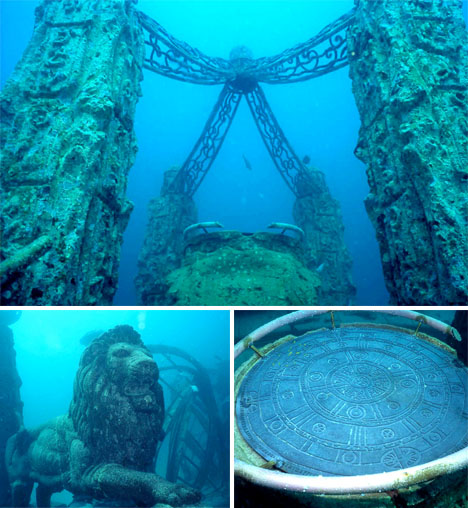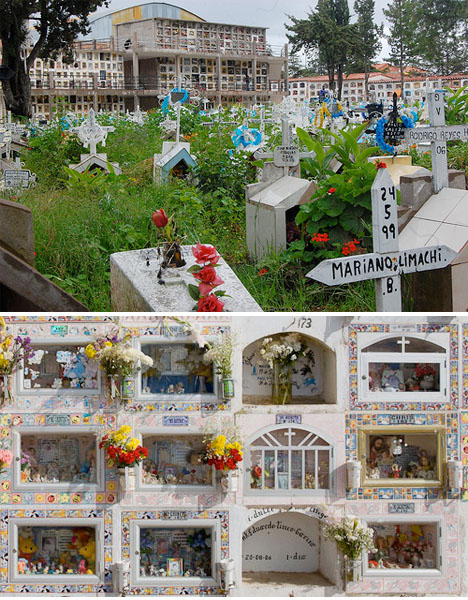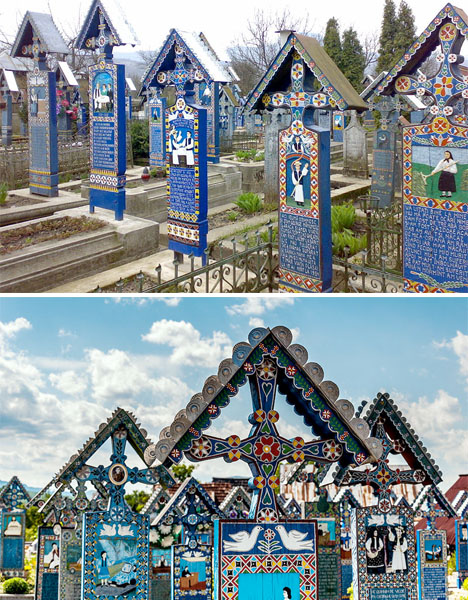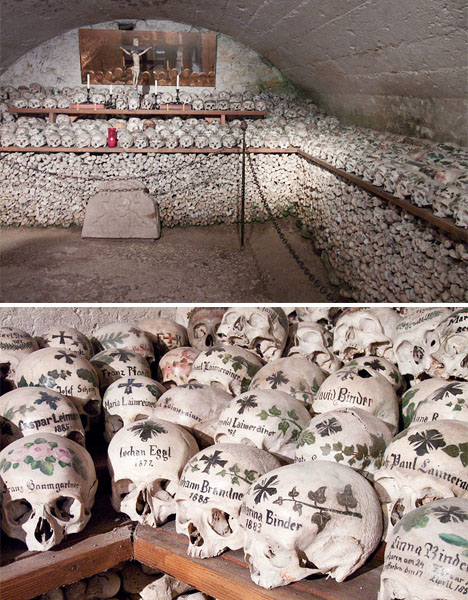Neptune Memorial Reef Cemetery, Florida
The world’s largest man-made reef is actually an underwater mausoleum for cremated human remains. Located 3.25 miles off the coast of Key Biscayne, Florida, the Neptune Memorial Reef takes up 16 acres of the ocean floor and is designed as both a habitat for marine life as well as a diving destination. There’s room for about 850 remains, with plans to accommodate over 125,000 over time.
Sucre’s General Cemetery, Bolivia
While many cemeteries are no more than a few rows of indistinguishable stone grave markers, others celebrate the unique identities of each deceased person. Sucre’s General Cemetery in Bolivia is one such resting place, and you won’t find many people quietly sobbing into handkerchiefs here. Instead, you’ll find relatives of the dead purchasing flowers at markets located just outside the cemetery and adding items that were meaningful to the deceased to each gravesite including toys, art and personal objects. On November 1st, All Saint’s Day, people visit the graves for a cheerful festival with elaborate spreads of food.
Romania’s Merry Cemetery
Another colorful exception to the somber cemetery rule is the Merry Cemetery of Romania, famous for its highly decorative tombstones painted with scenes from the lives of the people buried there. Many of these tombstones are also marked with humorous stories and poems. The epitaphs say things like, “Ioan Toaderu loved horses. One more thing he loved very much. To sit at a table in a bar. Next to someone else’s wife.” “Underneath this heavy cross. Lies my mother in law poor. Try not to wake her up. For if she comes back home. She’ll bite my head off.”
Hallstatt Ossuary, Austria
When there was no more room in the cemetery, authorities in Hallstatt, Austria came up with a unique solution: burying bodies for just 10-15 years before digging them up to make room for the new corpses. The skulls were removed, cleaned, sun-bleached and hand-painted to mark their identities before being placed in the ossuary over a massive pile of the rest of their bones. Hallstatt, a lakeside mountain resort, is the oldest known continuous human settlement, dating back to 5,000 BC. It’s home to less than a thousand people now, so there are no more issues with cemetery overcrowding, and the last skull was placed in the ossuary in 1997. However, if you’d like to add your own skull to the collection, you can make a special request.



